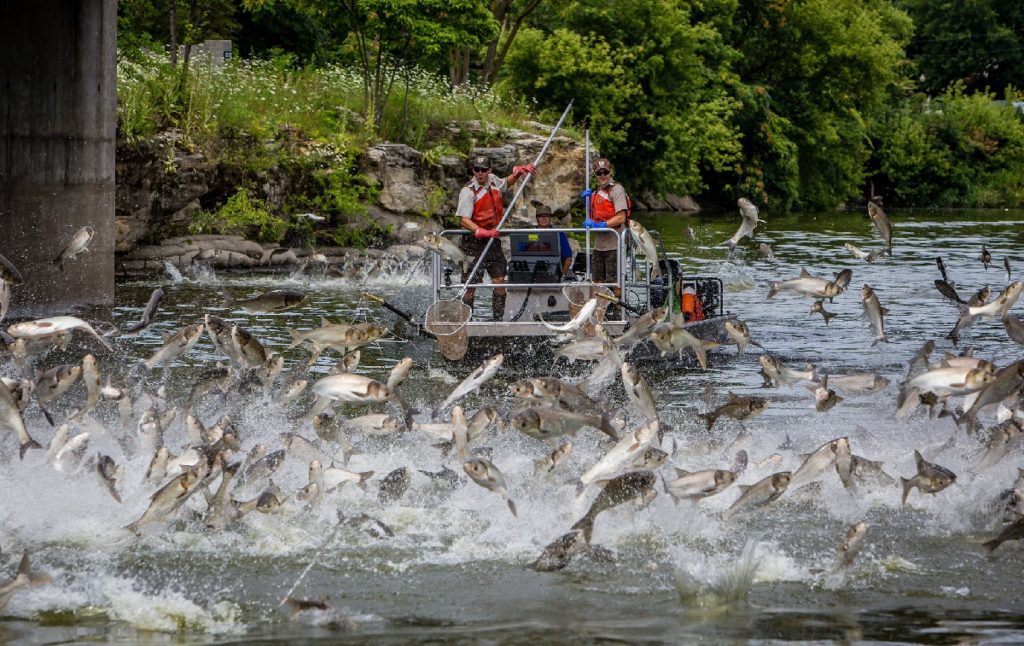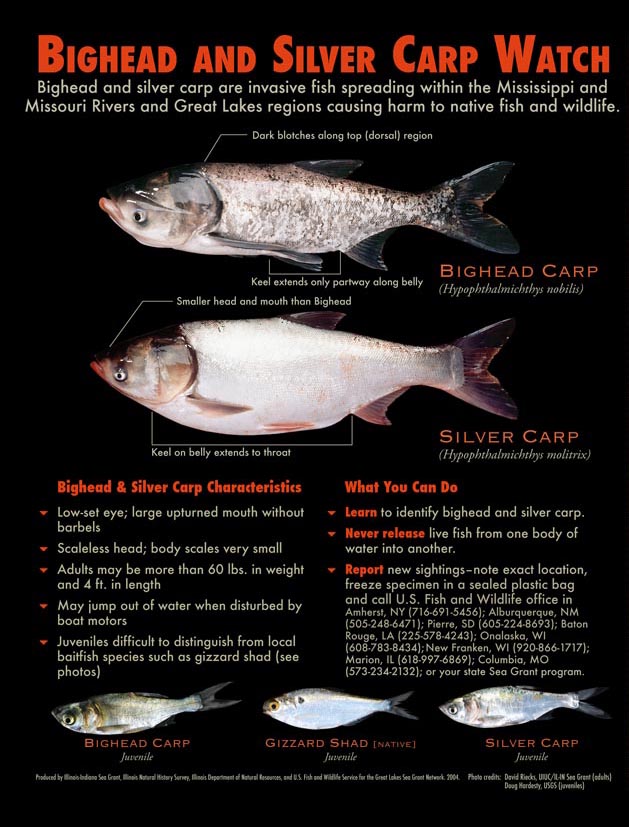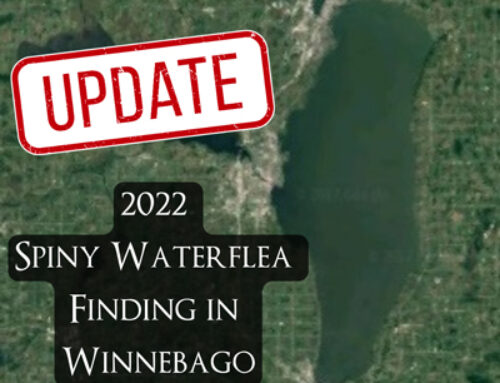Information and Updates

Photo Credit: Ryan Hagerty/USFWS
If you have heard of Asian Carp, you may be thinking of videos that capture fish leaping out of the water as they become startled from boat engines. You may also be thinking about the news over the summer that an Asian Carp was found 9 miles from Lake Michigan in the Chicago Sanitary and Ship Canal. These fish are predominantly Silver Carp, one of four non-native Asian carp species that are currently found in North America: Bighead, Grass, and Black Carp. Introduced in the 1960s (Grass Carp) and the 1970s (other three species), Asian carp were brought to the United States for use in aquaculture but flooding of aquaculture ponds allowed these fish to invade the Mississippi River watershed. Silver and Bighead Carp feed on plankton while Grass Carp eat aquatic vegetation and Black Carp eat mollusks.
So what’s the issue?
Asian carp have increased their range throughout the Mississippi River watershed. This is concerning because two of the Asian carp species are moving closer to the Great Lakes. Silver and Bighead Carp are moving up the Illinois River toward the Chicago Area Waterways System. There are many videos of Silver Carp leaping out of the water and striking boaters; sometimes causing bodily harm. If the Silver Carp become established in the Great Lakes, boaters will have to contend with these fish and the potential damage they can cause.
In addition, these fish can have a tremendous influence on the Great Lakes ecosystem. If these fish become established in the Great Lakes, native species will be impacted either directly (through competition for food) or indirectly (through changes to the food web caused by Asian carp). Since both the Bighead and Silver Carp feed on phytoplankton, they compete directly with forage fish such as shad, gizzard, and many other young fish. While it might seem that a reduction in phytoplankton would be beneficial, the rest of the food web will be impacted including a potential reduction in other fish species. In parts of the Illinois River, Silver and Bighead Carp have become dominant with some areas having these two fish species composing 90% of the fish biomass.

Photo Credit: Michigan Sea Grant
Asian Carp found on June 22, 2017 in Chicago Sanitary and Ship Canal
This past summer, a Silver Carp was found on June 22, 2017 just south of the O’Brien Lock and Dam in the Chicago Sanitary and Ship Canal a mere nine miles from Lake Michigan. The fish was the second Asian carp found past electric barriers that were put in place to stop the spread of Asian Carp into Lake Michigan. Two weeks of intense sampling were completed following the live capture of the male Silver Carp. Electrofishing and contract netting yielded no additional Silver of Bighead Carp. It was determined through genetic testing that the fish had been in that location for somewhere between a few weeks to a few months.
If you are interested in learning more about these invasive fish, the Great Lakes Sea Grant Network published a report called Education and Outreach on Asian Carp. You can find the report HERE.
Winnebago Waterways is a Fox-Wolf Watershed Alliance program. The Fox-Wolf Watershed Alliance is an independent nonprofit organization that identifies and advocates effective policies and actions that protect, restore, and sustain water resources in the Fox-Wolf River Basin.
Follow the Fox Wolf Watershed Alliance’s Winnebago Waterways Program on our Winnebago Waterways Facebook page or @WinnWaterways on Twitter! You can also sign-up for email updates at WinnebagoWaterways.org.
This article was written by Chris Acy, the AIS Coordinator for the Winnebago Waterways Program including Calumet, Winnebago, and Fond du Lac counties.

Photo Credit: NOAA






